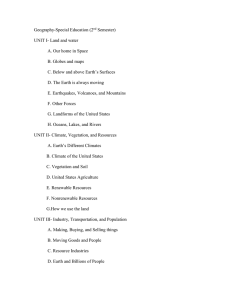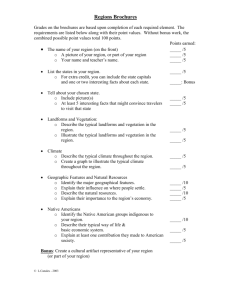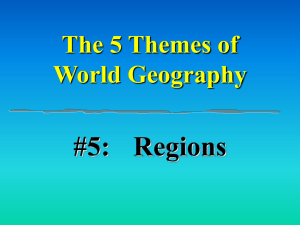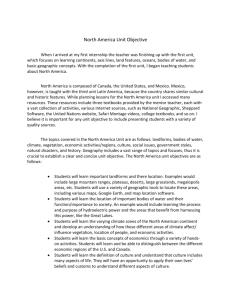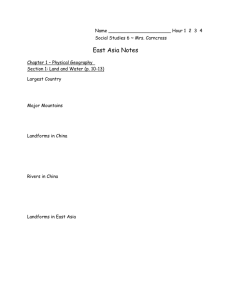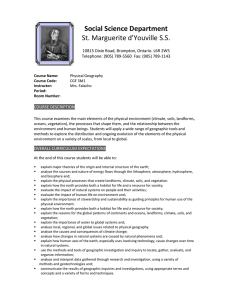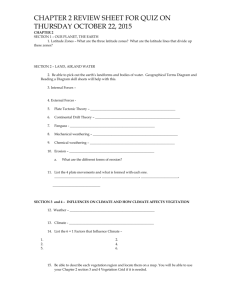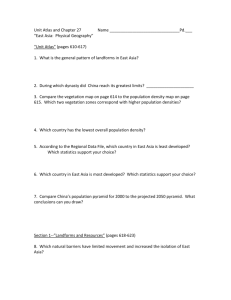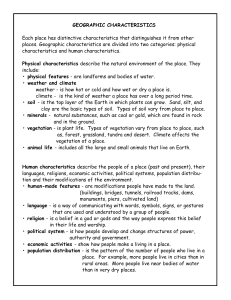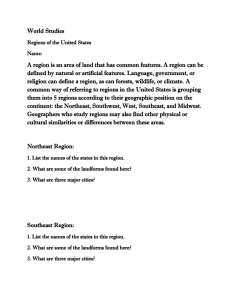Concept
advertisement
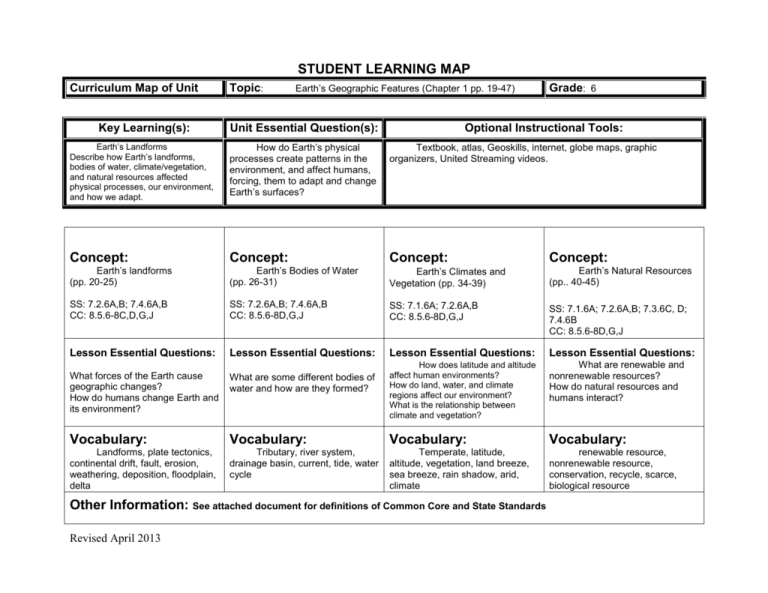
STUDENT LEARNING MAP Curriculum Map of Unit Key Learning(s): Topic: Earth’s Geographic Features (Chapter 1 pp. 19-47) Unit Essential Question(s): Grade: 6 Optional Instructional Tools: Earth’s Landforms Describe how Earth’s landforms, bodies of water, climate/vegetation, and natural resources affected physical processes, our environment, and how we adapt. How do Earth’s physical processes create patterns in the environment, and affect humans, forcing, them to adapt and change Earth’s surfaces? Textbook, atlas, Geoskills, internet, globe maps, graphic organizers, United Streaming videos. Concept: Concept: Concept: Concept: Earth’s landforms (pp. 20-25) Earth’s Bodies of Water (pp. 26-31) Earth’s Climates and Vegetation (pp. 34-39) Earth’s Natural Resources (pp.. 40-45) SS: 7.2.6A,B; 7.4.6A,B CC: 8.5.6-8C,D,G,J SS: 7.2.6A,B; 7.4.6A,B CC: 8.5.6-8D,G,J SS: 7.1.6A; 7.2.6A,B CC: 8.5.6-8D,G,J SS: 7.1.6A; 7.2.6A,B; 7.3.6C, D; 7.4.6B CC: 8.5.6-8D,G,J Lesson Essential Questions: Lesson Essential Questions: Lesson Essential Questions: Lesson Essential Questions: How does latitude and altitude affect human environments? How do land, water, and climate regions affect our environment? What is the relationship between climate and vegetation? What are renewable and nonrenewable resources? How do natural resources and humans interact? What forces of the Earth cause geographic changes? How do humans change Earth and its environment? What are some different bodies of water and how are they formed? Vocabulary: Vocabulary: Vocabulary: Vocabulary: Landforms, plate tectonics, continental drift, fault, erosion, weathering, deposition, floodplain, delta Tributary, river system, drainage basin, current, tide, water cycle Temperate, latitude, altitude, vegetation, land breeze, sea breeze, rain shadow, arid, climate renewable resource, nonrenewable resource, conservation, recycle, scarce, biological resource Other Information: See attached document for definitions of Common Core and State Standards Revised April 2013 Revised April 2013
